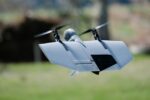BAE Systems and Thales have signed a Memorandum of Understanding (MoU) to co-develop the sonar suite for the United Kingdom’s next-generation SSN-AUKUS nuclear-powered attack submarines. The agreement marks a key milestone in the trilateral AUKUS defense partnership between Australia, the United Kingdom, and the United States.
SSN-AUKUS Program Overview
The SSN-AUKUS program is a cornerstone of Pillar 1 of the AUKUS security partnership announced in September 2021. It aims to provide Australia with conventionally armed, nuclear-powered submarines based on a UK design with US technology. The UK will also benefit from this development through its own replacement of Astute-class submarines with the new class by the late 2030s.
Under current plans:
- The UK will build its first SSN-AUKUS submarine in Barrow-in-Furness in the late 2020s.
- Australia will begin domestic construction of its own variant in Adelaide from the early 2040s.
- The design is expected to combine British hull architecture with US combat systems and weapons.
The sonar suite—critical for undersea situational awareness and engagement—is one of several subsystems being developed collaboratively by defense contractors across AUKUS nations.
Details of the Thales–BAE MoU
The MoU signed at DSEI 2025 formalizes cooperation between Thales (through its UK subsidiary) and BAE Systems Maritime. The companies will co-develop an integrated sonar system tailored for SSN-AUKUS operational requirements. This includes both passive and active sensors across bow arrays, flank arrays, intercept arrays, towed arrays (e.g., thin-line or low-frequency), and associated processing systems.
According to official statements:
- Thales will leverage its experience from supplying sonar systems for Astute-class submarines (e.g., Sonar 2076).
- BAE Systems will integrate these sensors into its platform design as prime contractor for SSN-AUKUS construction in Barrow-in-Furness.
The collaboration also includes joint R&D into future acoustic processing technologies—likely involving AI/ML-enhanced signal discrimination—and modular open architectures for easier upgrades over multi-decade service lives.
Sonar Capabilities Expected
While specific configurations remain classified or undecided at this stage of development, several capability benchmarks are likely based on legacy systems and emerging trends:
- Bow-mounted array: Wide-aperture passive array capable of long-range detection in deep ocean environments.
- Towed array: Very low frequency (VLF) passive sensor optimized for quiet target tracking beyond direct-path limits.
- Flank/intercept arrays: For close-range threat detection including torpedoes or fast-attack craft.
- Synthetic aperture sonar (SAS): Potential inclusion for mine avoidance or seabed mapping roles during ISR missions.
The processing backbone is expected to be software-defined with high-performance computing elements allowing real-time fusion of acoustic data with other onboard sensors such as optronics masts or ESM suites. Interoperability with US Navy Virginia-class systems is also a likely requirement given shared operational concepts under AUKUS interoperability goals.
A Strategic Step Toward Industrial Alignment Under AUKUS
This MoU reflects deeper industrial alignment between British primes like BAE Systems and transnational defense firms such as Thales within the AUKUS framework. While Pillar I focuses on nuclear submarine capability transfer to Australia—with strong US involvement—this agreement shows how European industry remains central to delivering critical subsystems.
The move also supports broader goals of sovereign capability development within each partner nation:
- For the UK: Ensures continuity from Astute-class expertise while modernizing domestic industrial base ahead of Dreadnought-class transitions.
- For Australia: Lays groundwork for local industry partnerships via technology transfer pathways starting this decade through interim Virginia-class leasing/training arrangements before domestic builds begin post-2040.
Ahead: Integration Challenges and Milestones
The integration timeline remains ambitious. According to Royal Navy planning documents released in mid-2024:
- A prototype sonar lab demonstrator is expected by late 2026 at Thales’ Templecombe facility in Somerset.
- A full-scale integration test rig may be commissioned at BAE’s Barrow site by early 2028 prior to first-of-class construction milestones.
Sourcing challenges—including rare-earth elements used in hydrophone materials—and workforce constraints across both nations’ shipbuilding sectors may pose risks unless mitigated by early investment strategies now underway via AUKUS Industry Forums launched earlier this year. Cybersecurity standards harmonization across partners is another area under review given increasing digitalization of submarine combat systems architecture—including remote diagnostics via secure links that could be vulnerable if not hardened appropriately from inception.
Conclusion
The Thales–BAE MoU represents more than just a supplier agreement—it signals growing momentum behind multinational defense-industrial teaming under AUKUS Pillar I. As SSN-AUKUS moves from concept toward detailed design over this decade, integrated sensor suites like those led by Thales will be pivotal not only in tactical performance but also long-term sustainability through modularity and upgrade paths aligned across three navies operating similar platforms well into mid-century timelines.







